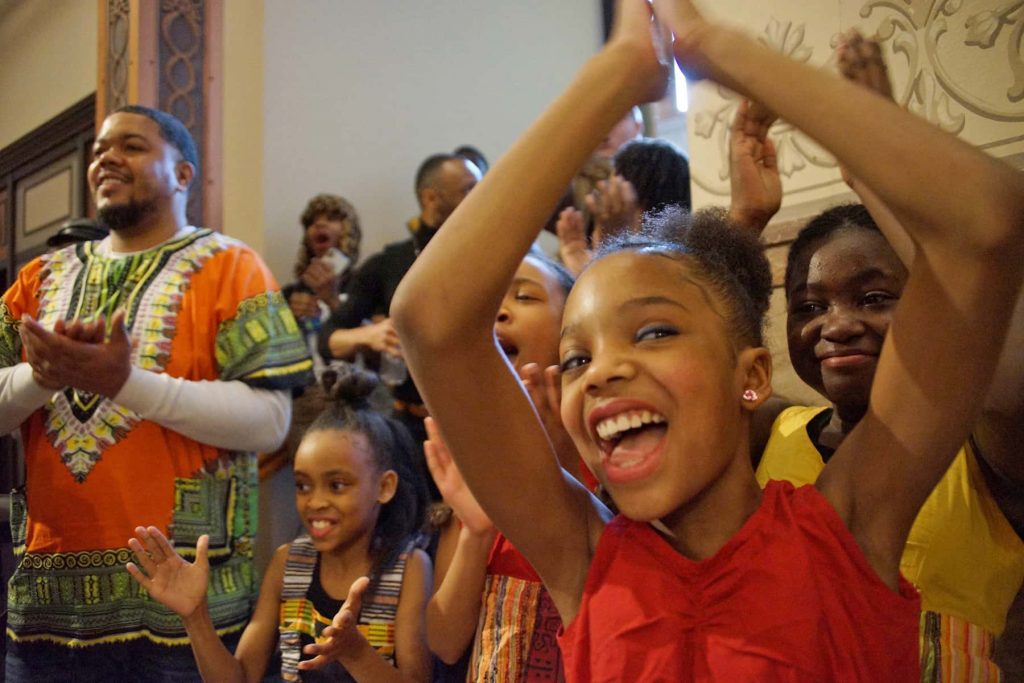
By Mirae J. Fornander, Clinical Psychology PhD Student, University of Nevada, Las Vegas; and Rebecca Dore, Senior Research Associate in Early Childhood, The Ohio State University
Families everywhere are adjusting to social distancing measures like closed schools and child care centers, workplaces, and the evolving disruption of a normal routine. With this new way of life comes a great deal of anxiety, which was already among the most common mental health problem in kids before the COVID-19 pandemic.
As parents grapple with questions regarding how to help their kids cope with an extraordinary situation, and what role technology can play, childhood experts offer some suggestions.
1. Establish a solid routine
The best way to protect children from experiencing anxiety is to keep life as normal as possible. Even though children are no longer following their usual school day routines, you can establish and follow a new routine at home. There is no one right way to structure the day in these circumstances. Decide as a family what age-appropriate daily schedule everyone will follow on weekdays and weekends and try to stick to it as best you can. Brainstorm together the best way that kids – and everyone else – can get some exercise, complete schoolwork and stay connected with friends and teachers. Staying active and engaged will help ward off boredom. Make an effort to cook and eat as many meals as you can together as a family. Eating together as a family benefits children in many ways. It boosts communication within a household, improves nutrition and increases well-being all around. Try to watch TV shows and movies as a group instead of having everyone do that on their own.
2. Restrict news consumption and ward off misinformation
Widespread misinformation and fear about the new coronavirus is stoking anxiety. Even people turning to reliable sources can find the the 24/7 news cycle anxiety-provoking when everything happening sounds bad or scary. To address these problems, children should watch or listen to the news with their parents but only in moderation. Parents should immediately address any questions or concerns their kids may have in a developmentally appropriate manner. It is important for parents to monitor their child’s access to the news, limit news consumption at home, and consciously choose the best ways for their family to keep up with current events. One way to protect kids from getting too much information is for parents to read or listen to the news privately using headphones or individual devices. Try not to watch TV news or listen to the radio or podcasts that everyone will hear or watch in the living room, kitchen or other shared spaces. Remember if you do not explore your child’s questions with them, someone else will – possibly an unreliable source on the internet.
3. Monitor and minimize your own anxiety
Children learn anxious behaviors from their parents. Taking the time to address your own worries and decrease your anxiety will benefit everyone around you. Luckily, there are relaxation skills that anyone can use to decrease their anxiety and the negative impact of everyday stress. Those with high levels of stress and anxiety or low mood may benefit the most. This is a great time for the family to practice deep breathing, meditation and yoga, and other skills found to decrease anxiety. Begin practicing when everyone is relatively calm, such as before bed, and later practice using the skills during times of more stress, like after watching a particularly negative news story.
4. Take actions to protect everyone from the coronavirus
Kids will feel more relaxed if they can gain a sense of control. Adults can teach them specific actions they can take to restrain the spread of the coronavirus. Teach them how to wash their hands correctly and give them incentives to do it often. For example, kids can choose their own 20-second hand-washing song, such as “Happy Birthday,” a tune from the play “Hamilton,” or Gloria Gaynor’s “I Will Survive” to sing every time they wash their hands. Families can use the Wash Your Lyrics website to create a digital hand-washing poster using a favorite song that they can print out. Encourage children not to touch their faces, especially their eyes, mouth and nose. With little kids, you can turn this into a game by having them earn a sticker whenever they catch a relative touching their own face. Make sure everyone in your family drinks enough water, eats a balanced diet and stays as active as they can given the circumstances. Being physically healthy makes it easier for your body to fight off illnesses. Together as a family, make a list of fun activities you can do while you are home together. Encourage everyone to submit ideas and choose multiple activities a day. Staying active and busy helps people of all ages feel better no matter what’s going on in the world or at home.
5. Choose high-quality educational media
Rather than handing over the remote or the iPad, parents can help young children by choosing media that’s worthwhile. By the time children are about age 3, high-quality media like “Sesame Street” can help them learn about words, numbers and even important facts about how to stay safe, research has shown. Kids can also learn from apps, such as Bedtime Math (which has been shown to have long-term effects on children’s math skills), Measure That Animal (a “Sesame Street” game focused on improving children’s measuring skills) and D.W.’s Unicorn Adventure (which uses a fantasy game to teach about healthy foods). This all means that screen time doesn’t just have to be a way to keep your child occupied while you send some emails or tend to household chores. But where can you find high-quality educational media? Resources like Common Sense Media provide research-based information and ratings about all types of media for kids of all ages. They even have a special page to help families during the coronavirus pandemic. Shows and apps from PBS KIDS are all based on child development research and a search tool on their website lets you choose your child’s age and a topic area to search for appropriate media. It also provides related activities that can be done both online and without a device. Another way to tie learning and screen time is to follow your child’s interests and find educational media to match whatever they are obsessing over. If 6-year-old Robby is begging to make pancakes for breakfast now that he’s not rushing off to school, find a video that shows the science behind how baking soda makes those pancakes extra fluffy.
6. Use media with children
Although adults often use media as a babysitter, young children get more out of it when they use it with an adult. Grownups, after all, can help them understand what’s going on and make connections to the real world. One study found that when 3-year-olds watched a “Dora the Explorer” episode, 75% of them thought the Spanish words in the show were not real or said they were not sure if they were real. Not surprisingly, those children were less likely to learn from the show. Parents can help by watching with children, talking to them about what they are seeing and linking it to their everyday lives. For example, a mom or dad can observe that “Dora speaks Spanish, like your friend Mateo from school.” Making the time and effort to do this is always easier said than done – especially when kids are home from school and need to be entertained around the clock while their parents are nearby teleworking. But even when you feel like you have no time or energy to watch, listen or play together, there are some ways you can fit some of what experts call “joint media engagement” into a busy schedule. Have your 4-year-old listen to an e-book at the kitchen table while you’re making dinner. You can pay attention and then talk about it afterwards with your child. Or listen to an age-appropriate podcast together while you’re folding laundry instead of setting your child up with a TV show in the other room.
7. Find ways to create, rather than consume
Kids can do more than merely use, play with and watch media created by others. Instead, they can use technology in creative and imaginative ways. For example, tech can help them write their own songs or create works of art. Children can also use smartphones, tablets or computers to create their own videos to share with family and friends. They can have fun filming themselves acting out a play or make an instructional video to teach a grandparent how to play their favorite video game.
Portions originally published on The Conversation as 4 ways to help kids relax as the coronavirus upends everyday life and 3 smart ways to use screen time while coronavirus keeps kids at home
Support evidence-based journalism with a tax-deductible donation today, make a contribution to The Conversation.















